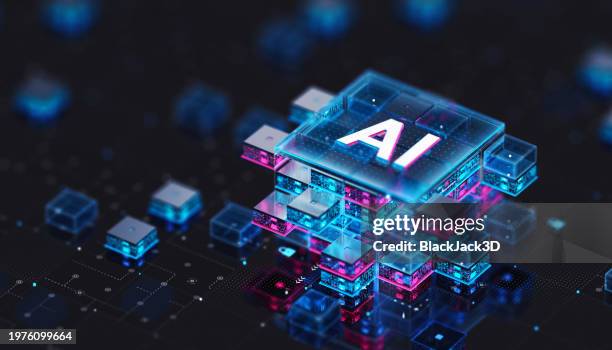Artificial intelligence is rapidly transforming industries, and its convergence with edge computing is creating a powerful synergy that unlocks unprecedented opportunities. By bringing AI algorithms closer to the data source, edge computing eliminates the need for constant communication with centralized cloud servers, resulting in faster processing, reduced latency, and enhanced security. This blog post delves into the exciting realm of AI in edge computing, exploring its applications, benefits, and future trends.
The Convergence of AI and Edge Computing
What is Edge Computing?
Edge computing is a distributed computing paradigm that brings computation and data storage closer to the location where it is needed, to improve response times and save bandwidth. Instead of relying on a centralized cloud server, processing occurs on devices at the “edge” of the network, such as sensors, smartphones, or dedicated edge servers.
- Key features of edge computing:
Proximity: Processing data closer to its source.
Reduced Latency: Faster response times due to local processing.
Bandwidth Efficiency: Less data needs to be transmitted to the cloud.
Enhanced Security: Data can be processed and stored locally, reducing the risk of exposure during transmission.
* Offline Operation: Some operations can continue even without a cloud connection.
What is Artificial Intelligence?
Artificial intelligence (AI) encompasses the development of computer systems that can perform tasks that typically require human intelligence. These tasks include learning, problem-solving, perception, and decision-making. Machine learning (ML), a subset of AI, enables systems to learn from data without explicit programming. Deep learning (DL) is a type of ML that utilizes artificial neural networks with multiple layers to analyze data and extract complex patterns.
The Synergy
Combining AI with edge computing enables real-time data analysis, intelligent decision-making, and automated actions at the edge. This synergy dramatically improves performance and efficiency in various applications. Imagine a self-driving car using AI to process sensor data locally, making instant decisions about steering, braking, and acceleration without relying on a distant cloud server. This immediacy is the heart of the AI-Edge revolution.
Benefits of AI at the Edge
Reduced Latency and Real-Time Processing
One of the most significant advantages of AI in edge computing is reduced latency. By processing data closer to the source, the need for transmitting data to a centralized cloud server is minimized, resulting in faster response times. This is particularly crucial in applications where real-time processing is essential, such as:
- Autonomous Vehicles: Making instant decisions based on sensor data to ensure safety.
- Industrial Automation: Monitoring and controlling manufacturing processes in real-time to optimize efficiency.
- Healthcare: Analyzing patient data from wearable devices to provide timely alerts and interventions.
- Security Systems: Identifying threats and triggering alarms instantaneously.
Enhanced Privacy and Security
Edge computing allows for data to be processed and stored locally, reducing the need to transmit sensitive information to the cloud. This enhances privacy and security by minimizing the risk of data breaches and unauthorized access. Examples include:
- Smart Cameras: Analyzing video footage locally to identify suspicious activities without sending the raw footage to a cloud server.
- Medical Devices: Processing patient data locally to protect privacy and comply with regulations.
- Retail Analytics: Analyzing customer behavior in-store without transmitting personally identifiable information to the cloud.
Improved Bandwidth Efficiency and Cost Savings
By processing data at the edge, the amount of data that needs to be transmitted to the cloud is reduced, which improves bandwidth efficiency and lowers communication costs. This is particularly beneficial in scenarios where bandwidth is limited or expensive, such as remote locations or mobile applications.
- Remote Monitoring: Collecting and processing data from sensors in remote locations without relying on expensive satellite communication.
- Smart Cities: Analyzing data from various sensors to optimize traffic flow and energy consumption without overwhelming the network.
- Agriculture: Monitoring crop health and irrigation levels in real-time without the need for constant cloud connectivity.
Increased Reliability and Resilience
Edge computing enables applications to continue functioning even when the connection to the cloud is disrupted. This increases reliability and resilience by ensuring that critical tasks can be performed locally, regardless of network availability. This is critical for:
- Emergency Services: Providing communication and coordination capabilities even when the network is down.
- Military Operations: Maintaining situational awareness and control in remote and hostile environments.
- Disaster Response: Supporting rescue and recovery efforts in areas affected by natural disasters.
Applications of AI in Edge Computing
Industrial Automation
AI-powered edge computing is revolutionizing industrial automation by enabling real-time monitoring, predictive maintenance, and intelligent control of manufacturing processes.
- Predictive Maintenance: Analyzing sensor data from equipment to predict failures and schedule maintenance proactively, reducing downtime and improving efficiency.
- Quality Control: Using AI to inspect products for defects in real-time, improving quality and reducing waste.
- Robotics: Enabling robots to perform complex tasks autonomously and adapt to changing environments.
Smart Cities
AI in edge computing plays a crucial role in creating smart cities by enabling intelligent management of traffic, energy, and public safety.
- Smart Traffic Management: Optimizing traffic flow by analyzing data from cameras and sensors in real-time, reducing congestion and improving air quality.
- Smart Energy Management: Optimizing energy consumption by analyzing data from smart meters and sensors, reducing costs and improving sustainability.
- Smart Security: Enhancing public safety by analyzing video footage and sensor data to detect suspicious activities and respond to emergencies.
Healthcare
AI-powered edge computing is transforming healthcare by enabling remote patient monitoring, personalized medicine, and faster diagnosis.
- Remote Patient Monitoring: Monitoring patient vital signs and health data remotely, enabling early detection of health issues and reducing the need for hospital visits.
- Personalized Medicine: Analyzing patient data to tailor treatment plans to individual needs, improving outcomes and reducing side effects.
- Medical Imaging: Analyzing medical images locally to assist doctors in making faster and more accurate diagnoses.
Autonomous Vehicles
AI in edge computing is essential for enabling autonomous vehicles to navigate safely and efficiently by processing sensor data in real-time and making instant decisions.
- Object Detection: Identifying and classifying objects in the vehicle’s surroundings, such as pedestrians, cars, and traffic signs.
- Path Planning: Planning the optimal route based on real-time traffic conditions and road hazards.
- Collision Avoidance: Taking immediate action to avoid collisions with other vehicles or obstacles.
Challenges and Future Trends
Challenges
Despite the numerous benefits, implementing AI in edge computing also presents several challenges:
- Resource Constraints: Edge devices often have limited processing power, memory, and battery life, which can restrict the complexity of AI algorithms that can be deployed.
- Security Concerns: Edge devices are often deployed in vulnerable environments, making them susceptible to cyberattacks and data breaches.
- Management and Deployment: Managing and deploying AI models on a large number of edge devices can be complex and time-consuming.
- Data Heterogeneity: Data collected from different edge devices can be heterogeneous and noisy, which can affect the accuracy of AI models.
Future Trends
The future of AI in edge computing is promising, with several key trends emerging:
- TinyML: Development of machine learning algorithms that can run on extremely low-power devices, expanding the range of applications for AI at the edge.
- Federated Learning: Training AI models across distributed edge devices without sharing raw data, preserving privacy and improving model accuracy.
- Edge-Cloud Collaboration: Combining the strengths of edge and cloud computing to enable more sophisticated AI applications.
- Hardware Acceleration: Developing specialized hardware accelerators to improve the performance of AI algorithms on edge devices.
Conclusion
AI in edge computing represents a powerful paradigm shift that is transforming industries and creating new opportunities. By bringing AI algorithms closer to the data source, edge computing enables faster processing, reduced latency, enhanced security, and improved bandwidth efficiency. While challenges remain, ongoing advancements in TinyML, federated learning, and hardware acceleration are paving the way for widespread adoption of AI in edge computing across various applications. As the technology matures, we can expect to see even more innovative and impactful use cases emerge, further solidifying the critical role of AI at the edge in our increasingly connected world. The key takeaway is that embracing AI in edge computing provides a competitive advantage by enabling real-time decision-making, improved efficiency, and enhanced security.




